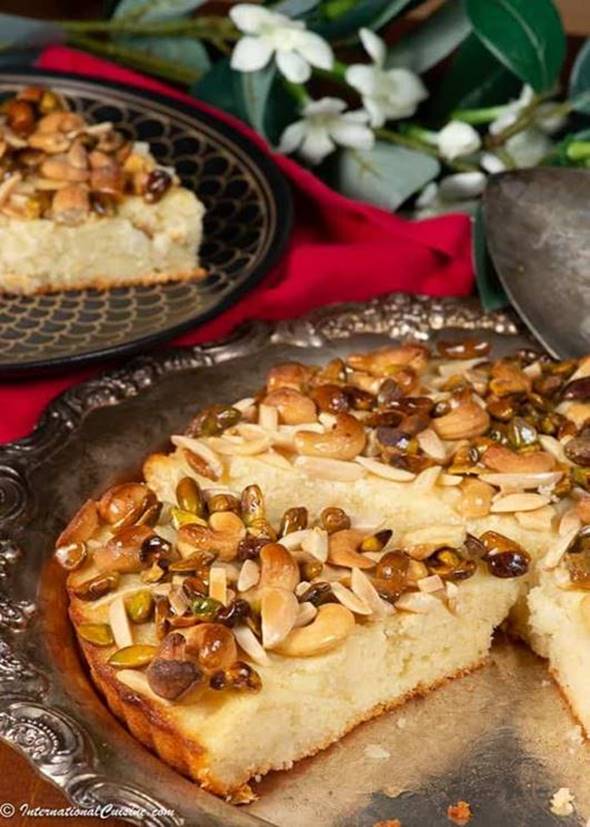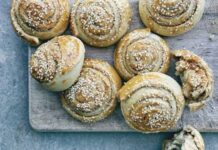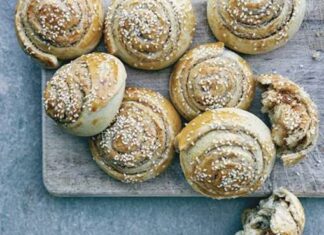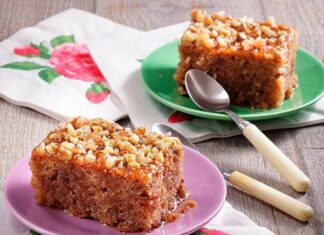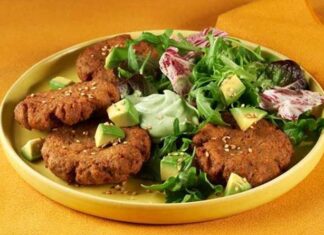“International Cuisine is a culinary and travel adventure. We enjoy sharing recipes and travel tips from every country in the world, and exploring the world through food. Our mission is to promote cultural appreciation by cooking our way across the world, one nation at a time. To discover the struggles and joys that have influenced the people, to gain an appreciation of their land, culture and traditions, and to feel the hospitality that only sharing a meal can convey,” says Darlene Longacre, the food and travel blogger at International Cuisine.
Namoura cake, also known as Basbousa or Harissa, is a traditional Middle Eastern sweet dessert, made with semolina flour and topped with assorted nuts and a simple sugar syrup. “This cake is one of the most popular in the Middle East and North Africa, and also in some Balkan countries such as Greece, Bulgaria, Albania, and in Turkey or in Armenia. It can be found everywhere, in restaurants, in bakeries, and there will always be someone to offer you a piece. Use coarse semolina flour (not fine) to achieve the proper texture. Additionally, it calls for superfine sugar. Rose water and orange blossom water are used in the syrup. The batter is made with butter and yogurt that results in a light, airy cake. Use whatever nuts you like, but the recipe calls for this cake to rest in a cool place for about 3 hours so be sure to plan ahead when you make it.”
“Syria is thought to be one of the original and oldest civilizations on earth and believed to be part of the Fertile Crescent, where the earliest people practiced cattle breeding and agriculture. Archeologists have uncovered skulls and bones of Neanderthals that date back roughly 700,000 years. Historically, the name Syria, referred to a much wider region than its borders of today. It was known as al-Sham in Arabic, which included: Jordan, Lebanon, Israel, Palestine and much of Turkey and of course modern day Syria.”
“Interestingly, the name h’risseh (harissa) in Lebanon is a savory dish, a porridge made with wheat and meat. In Syria, however, there is no confusion, everyone knows this Syrian cake,” says Darlene. “This is the most famous treat in the city of Nabk in particular, and in the Damascene countryside in general. Its most important ingredients are semolina and ghee, or unsalted butter, and it is prepared in a special way where the dough is placed in a large tray and sprinkled with grated pistachios or walnuts. It is then baked and soaked in sugar syrup. The city of Nabk is known as a popular stop for travelers going to and from Damascus who look forward to enjoying the famous dish. This recipe is relatively easy to make. And because it’s soaked in syrup, it stays moist without drying out for about a week if stored properly.”
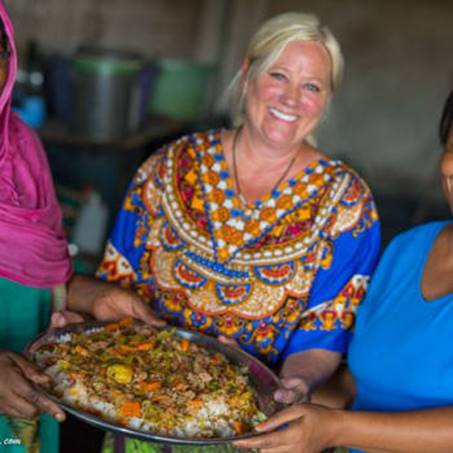
Ingredients:
Batter:



